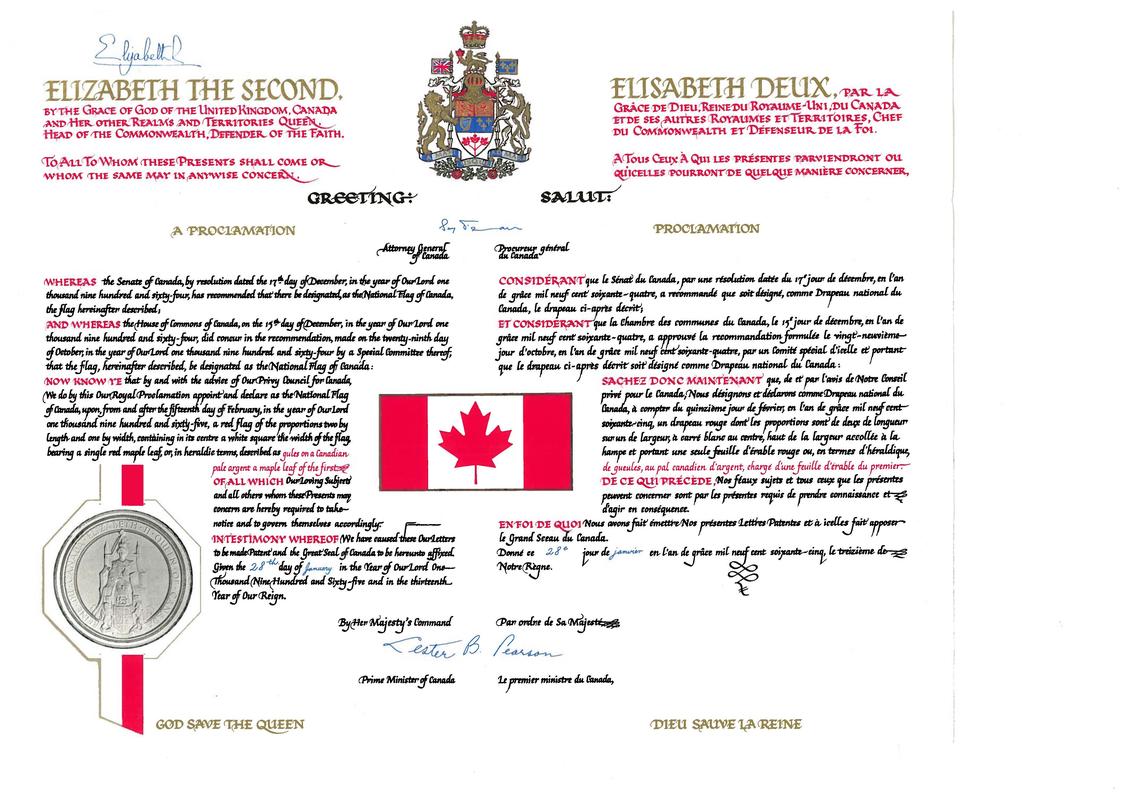June 30, 2015
University's collection chronicles history of the Canadian flag

The Royal Proclamation in January 1965 that made the maple leaf design the official flag of Canada.
George F. B. Stanley Collection, University of Calgary
Tomorrow, Canadians from coast to coast will wave the national flag often and proudly. This year, Canada Day celebrations are particularly significant because 2015 marks the flag’s 50th anniversary.
Tucked away in Archives and Special Collections at the University of Calgary is a fascinating account of how the flag came to be. It’s part of the George F.B. Stanley Collection, which includes both the archive and personal library of the late eminent historian who proposed the design of the Canadian flag.
“It’s most appropriate that this collection resides at the University of Calgary, because George Stanley was a native Calgarian born and raised here in the early years of the 20th century,” explains Don Smith, professor emeritus who taught history at the University of Calgary for 35 years. “He wrote early books on western Canadian history and his biography of Louis Riel remains the best and most complete that has ever been written.”
The collection was donated to the University of Calgary after Stanley passed away in 2002. Smith, a close friend of Stanley’s, was instrumental in bringing the items to Calgary from Sackville, N.B., where Stanley resided.
Among the collection of books, letters, essays, scrapbooks and newspaper clippings is a 19-page document typewritten by Stanley documenting the story of how the flag came to be. It tracks the evolution of the symbol from the Union Jack through various renditions of the red ensign to, finally, the maple leaf. This process spanned the terms of 14 different prime ministers, from Sir John A. Macdonald to Lester B. Pearson.
It was nearly a full century after Confederation that the flag as it is today was raised for the first time on Parliament Hill on February 15, 1965, following a Royal Proclamation by Queen Elizabeth II that made the flag official. A copy of that document is included in the Stanley archive as well as a transcript of a debate in the House of Commons about the need for a national flag.
“It’s wonderful to have right here on our campus an historical record that is central to Canadian heritage and cultural identity, and by preserving it in our archives we are making it accessible for future generations,” says Annie Murray, head of Archives and Special Collections, which is operated by the university’s Libraries and Cultural Resources.
George Stanley served as lieutenant-governor of New Brunswick, was a veteran of the Second World War, and was made a Companion of the Order of Canada. He studied at the University of Alberta and then at Oxford University as a Rhodes Scholar. Stanley taught at Mount Allison University in Sackville, N.B., the University of British Columbia and the Royal Military College (RMC) in Kingston, Ont. It was during his time as dean of arts at the RMC that he proposed the design for the flag in 1964 to Ontario Liberal MP John Ross Matheson. A few months later, it was approved 163 votes to 78.
Stanley’s childhood home still stands in the Beltline district of Calgary. The building is now the Laurier Lounge, a French restaurant.
